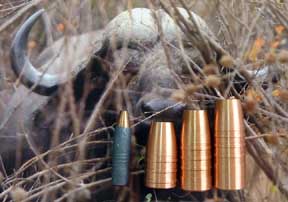

 The Accurate Reloading Forums
The Accurate Reloading Forums  THE ACCURATE RELOADING.COM FORUMS
THE ACCURATE RELOADING.COM FORUMS  Rifles
Rifles  Big Bores
Big Bores  Sectional Density
Sectional DensityGo  | New  | Find  | Notify  | Tools  | Reply  |  |
| One of Us |
Sharing some of my experience with you: I mentioned in a previous post that bullet design can play havoc with a bullet's performance. The local Claw bullet features a bonded core (pure lead) with pure 1-mm thick copper jackets. They are available in RN and Spitzer configuration. The Claw RN bullet is an example of when a particular design does not work as intended - i.e. to provide straight-line penetration, retain most of its weight, does not loose petals and open up without over-expanding, as that would impair penetration. 3 animals were shot with a 375 H&H, using the Claw 300 gr RN (round nose) bullet. Muzzle velocity was down loaded to 2,250 fps and the distance was about 60 paces for the Gemsbok and 25 paces for the warthog. Penetration was shallow because of over expansion and the two gemsbok had to take multiple shots each, except for the warthog. Needless to say a long chase and follow up on foot left an indelible memory with the hunters, as they were so tired they could hardly speak to each other when the ordeal was over. The first 3 bullets shot from a 375 H&H (from left to right) in the photo were shot and retrieved from the animals as indicated. The 4 th bullet merely shows a sectioned view of a .458/500 gr Claw RN bullet. 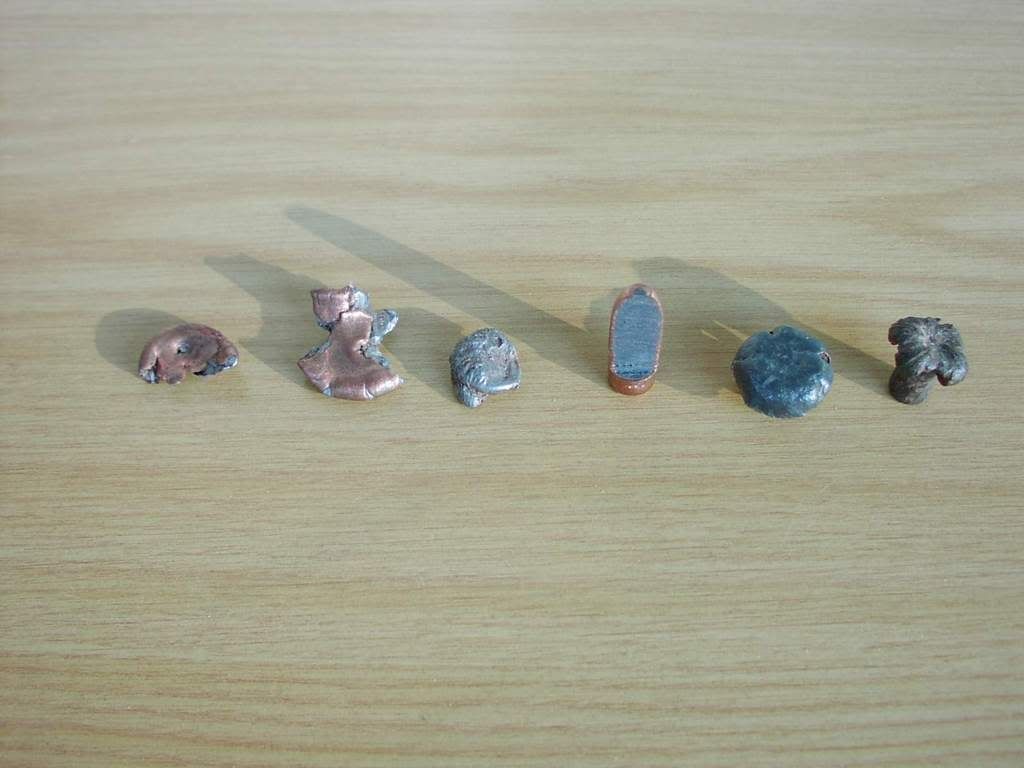 Animal ----- Mass retained --- Expansion Gemsbok 1 -- 151gr /(50%) ---- 2.6 x Gemsbok 2 -- 227gr /(76%) ---- 3.2 x Warthog ----- 141gr /(47%) ---- 2.0 x It is clear that the opening at the tip of the bullet is actually too small and it does not aid the expansion process on contact, and the curvature of the ogive is such that the bullet flattens instead of opening up, and this is furhter aided by the inherent weakness of the cannelure, as it folds exactly there in half; with the result that it squeezes some lead out there as it separates, and the folding takes place to look almost as flat as a penny. The same bullet in Semi-Spitzer configuration does not deform in this way as it has a bugger opening at the tip. Thicken the walls up to 2-mm in the Spitzer and the right balance was achieved, and its performance was absolutely magnificent. The lesson here is that expansion must be arrested at some point, as over-expansion inhibits deep penetration. Despite the Claw bullet's fairly good weight retention of 76%, its over-expansion to 3.2 times of original diameter, rendered it totally ineffective. Construction must be such that the bullet opens up in a controlled way; progressively it must become stiffer to cater for higher impact velocities, and it must retain its petals if it is comply with all criteria. In the following photo you can see the Claw bullet that features a 2-mm thick jacket in Spitzer version with no cannelure versus the 3 rd bullet (1-mm thick in RN version) in the above photo - what a remarkable difference. The retained weight shot up to 98.6%.  Warrior | |||
|
| One of Us |
Some more info on the fact that no amount of SD will do you any good with Sierra Gameking bullets. Their construction is just not up to it. They are probably the worst bullet out on the market. I tested both .284/175 gr bullets and .277/130 gr bullets in wetpacks. The Sierra "Game King" bullet is a misnomer in my opinion, as it is everything but a bullet intended for game and definitely not to a king’s taste. In a wetpack with my 7x57, the 175 gr bullet had its lead-core disappeared and disintegrated completely. All I could find was a peace of jacket that retained only 28.5% of its weight and that at a modest velocity of only 2, 370 fps. Penetration was shallow; a mere 3.5 inches and its thin petals were folded back close to the shank. See the bullet on the far right: 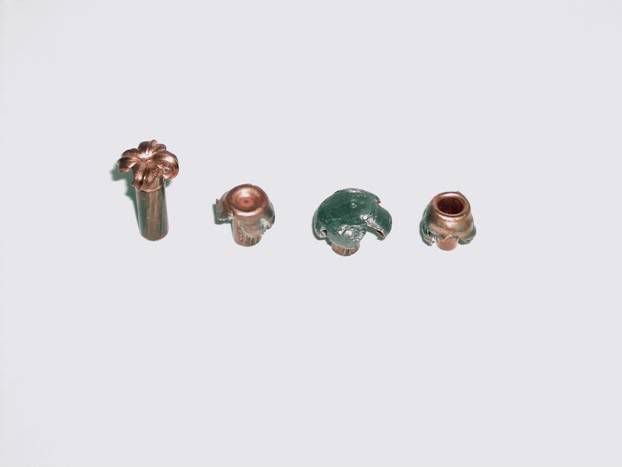 In game I have noticed the same thing. The lead disintegrates and as a byproduct it has the negative of contaminating the surrounding wound track. I have witnessed how a kudu ran away after being shot by a friend of mine. It was shot smack on the shoulder with one of these bullets. It is only good for headshots in my opinion. I recently hunted on a farm where 2 eland was wounded with Sierra Gameking bullets with bodyshots. The 130 gr bullet out of a 270 Win cannot even exit the head of a eland, but it did drop the Eland in its tracks as it was a brain shot, which a 223 Rem would have done as well. Warrior | |||
|
| one of us |
Mark, Dropping a couple of notches on "traditional" Sd with monos is almost a requirement, as you rightly point out. That is why I have been ragging on the Sd proponents, albeit tongue in cheeck at times. Unlike lead core bullets, monos tend not to react the way they should under "Sd Law". The .458cal, 400gr HV bullet in "1" below was recovered from a lion recently. Impact speed was 2300fps to 2400fps and weight retention is 100%. In "2" it is compared to an unfired 400gr HV. "3" shows the expansion at 2.5 times the caliber. In "4", it is shown with a 450gr HV bullet fired into water at 2500fps. Despite the difference in Sd and impact speed, expansion is similar. With lead cores, a variance in Sd and/or speed, usually brings much greater differences in the appearance and weight retention of the bullet.  | |||
|
| One of Us |
I love it when a bullet performs like this - and natuarally we need to get the velocity in such a band to give us this result. Congratulations. Warrior | |||
|
| one of us |
100% weight retention is nice to have, if the caliber/bullet combination is incapable of going faster than about 2400fps. At that speed and lower, the higher the retention, the better, I would say. However, with caliber/bullet combinations capable of more speed, there is a better way. It also involves gross transgression and bending of "Sd Laws". A good example is professional hunter and outfitter, Jacques Greeff. He used a 450 Rigby to shoot seven Black Wildebeest recently. BW have similar live weight to that of the lioness mentioned in my previous post. The bullet Jacques used was a 315gr HV at 2900fps. Even on lengthwise shots and quartering shots, not a single bullet was recovered. At 2900fps, these bullets will lose the petals some way into the animal and, up to that point, cause about the same amount of damage, at similar penetration depths as a bullet that gives full retention. The advantage is that the lighter, faster bullet will then lose the petals and continue on, much deeper than the slower bullet, and usually punch through. Total wound channel volume exceeds that of the slower bullet and that can only be good. Witness the fact that the recovered (mono) bullets we see, usually show excellent retention. The ones that punch through and produce bang flops with more certainty than the ones that are retained in the animal, are the ones that have morphed through the reduction in Sd, with a mushroom, back to an increase in Sd, when the petals part company. The ones you never see actually work better, despite the fact that the tradition of complete retention has been grossly violated. Needless to say, none of this applies to lead core bullets. | |||
|
| Moderator |
which bring us back to the Berry-Smith SD formula modification Gerard, wow, in this case, we totally agree. .275 is great, and as your 400grs prove, even less keeps the bullets together NOT LEAD opinions vary band of bubbas and STC hunting Club Words aren't Murder - Political assassination is MURDER Information on Ammoguide about the416AR, 458AR, 470AR, 500AR What is an AR round? Case Drawings 416-458-470AR and 500AR. 476AR, http://www.weaponsmith.com | |||
|
| One of Us |
Back to the expansion capability of the bullet. The construction of the bullet will dictate how the bullet will expand, hold together and retain weight. I recently shot an Eland in the mountains with a .308/170 gr Privi Grom bullet. I placed the shot behind the shoulder. It was a lung shot and just nipped the heart. The eland bull jumped in the air and then proceeded to walk away with the herd as if it had no effect on him. I had to wait a while before the bull was clear and positioned itself so I could not wound another member of the heard. Then I took another shot at him - this time a headshot at 145 yds. No major bone was encountered and the bullet was retrieved on the opposite side, just underneath the skin where it bulged. Good penetration for such a small bullet one might say, but it did not have the effect that I had hoped for. When I cut the bullet out I saw that it only expanded to 11 mm's or 1.4 times diameter, whilst losing very little weight (I did not measure the weight loss). Later when we opened the bull up, it revealed that the wound channel was surprisingly small and explained why the bullet had such little effect. This is how we learn in the field when we see the effect of a bullet. Next time I will use my 9,3 and punch a 21.5 mm hole through it with a 286 gr Rhino bullet or a 18.6 mm hole with a 250 gr Barnes-X bullet and that should make a difference. Here is the Grom bullet in question that only expanded to 11 mm's: 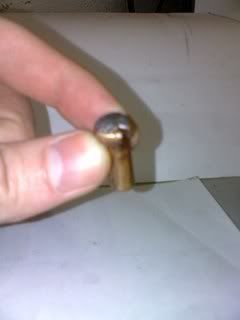 Warrior | |||
|
One of Us |
ok... From what I gather... A non deforming flat nose solid of .25 SD, an expanding mono of .275 SD and a soft of .3 SD will penetrate about the same all things being equal? The SD-BS expanded theory. 577 BME 3"500 KILL ALL 358 GREMLIN 404-375 *we band of 45-70ers* (Founder) Single Shot Shooters Society S.S.S.S. (Founder) | |||
|
| Moderator |
NO a non deforming mono 2.75 sd will perform as well as a .300 solid of a conventional design. an expanding comapred to expanding, same thing.. LIKE TO LIKE opinions vary band of bubbas and STC hunting Club Words aren't Murder - Political assassination is MURDER Information on Ammoguide about the416AR, 458AR, 470AR, 500AR What is an AR round? Case Drawings 416-458-470AR and 500AR. 476AR, http://www.weaponsmith.com | |||
|
| one of us |
The 170gr 308 above makes for an interesting comparison: 170gr .308" lead core v. 60gr .224" turned mono. The 60gr .224 HV bullet below was launched at 4000fps and was used to head shoot a zebra at 40m. It completely penetrated the skull and was also caught by the skin on the outgoing side. It measures a shade over 11mm in diameter. Sd aint what it used to be, it is easily replaced by speed.   | |||
|
| One of Us |
Gerard, The most culling for the meat market that I know of gets done with a 223 Rem, and that is typically done with 55 gr lead-core bullets at around 3,100 fps going for head-shots only. Using a 60 gr monolithic bullet, such as the one of yours at 4,000 must be absolutely ideal and much more reliable for those guys wanting to take headshots at springbuck at extended ranges where one has to shoot 250+ yds. I have seen guys in the Karoo and Upington (Northern Cape) hunting springbuck, taking shots at 350+ yds with a 243 Win, that amazes one. This one must be a winner. Warrior | |||
|
| one of us |
Alf, I do not follow. Surely Sd has nothing to do with the caliber, ie big bore or .172". It is after all possible to have two bullets sitting on the bench top, one being a .224 with an Sd of 0.300 and the other being a 2 Bore with an Sd of 0.200. When both are fired and all else being equal (which it never is), the .224 will go deeper, not so? No doubt the 2 Bore will have the bigger punch, but the 224 will go deeper. As for fragmentation grenades, the particles are not spin stabilised and, the lack of distance and penetration that is achieved with such projectiles, illustrate very well why you do not want your bullets tumbling in flight, or at any time after impact. | |||
|
| One of Us |
New rules are new rules and will always break new ground. Since SD is an old concept, SD will just remain SD. It cannot be replaced by anything else; its a unique entity that lives in the form of a ratio where mass and bore diameter needs to be brought in relation to each other ... and speed remains just speed. Combining mass and speed lead us to the next item called momentum and there we will find the inter-play where one parameter can be replaced with the other to still yield the same amount of momentum value. Alf is a purist, and often we stand to be corrected by him and that makes it fun to be here. Warrior | |||
|
| One of Us |
No single parameter can be made absolute, in other words, it cannot stand on its own legs in isolation: Not velocity Not mass Not momentum Not energy Not bore size Not SD Not Mo/Xsa Not the construction of the bullet One needs a combination of these factors like mass, bore size, velocity and how a particular bullet based on its construction will perform in a given velocity band. Bearing in mind that the situation is more complex than just a linear relationship due to increasing stagnation pressures as velocity goes up, and the multitude of expansion and mass reduction tendencies at varing velocities will yield a different result. So we cannot just make simple statements like "Velocity" can replace or make up for "SD" or the other way round. SD can never be replaced; it is intrinsically present in any and all combinations, whether we like it or not. SD is an ever present ratio and not a "base" parameter. The stupidity of making SD an absolute figure can be seen in the comparison of two bullets; one made from very soft rubber and the other from copper. The rubber bullet will probably bounce off the target, whereas the copper bullet will penetrate and cause severe damage. Warrior | |||
|
| One of Us |
What is the value of SD then? Its value will be found in a given caliber and not by using it for cross-caliber comparisons. Also it cannot be used across a range of bullets with different constructions - it actual speaks for itself. I further summit when the threshold strength of a bullet is exceed, it will break down and perform in a less than optimal way. High SD has particular value in dangerous game hunting at close range where high velocity is not needed, but rather more mass, thus SD. At further range, we should not forget that SD also assists in a getting a higher BC as it is the numerator in the BC equation [BC = SD/i ]. As most bullets will kill antelope, SD is not such a predominant factor in killing thin-skinned light to medium game, but it does play a role as SD is ever present in a disguised way. I have proven it with 7 mm Barnes-X bullets in a wetpack and published the results in the SA Hunter magazine. I started off with a 175 gr bullet, cut 6 mm off the base and got 142 grains for the 2 nd lot of bullets, and then cut 12 mm off for the 3 rd lot. Upped the charge progressively to reach higher velocities and shot them in my 7x57 mm Mauser. The results shown diminished penetration as the bullet mass and SD dropped. As the Barnes-X bullet expanded evenly to 2x diameter in all cases, the results are in sympathy with momentum values as well as Mo/Xsa, which is actually the better yardstick. The upper velocity was kept under 2,650 fps so that the petals would not shear off and so affect the cross sectional area of the bullet, which would have brought in a change in bullet mass and Xsa. Bullet ----- SD ----- AOL ----------- Powder ------ Velocity ----- Momentum -------- Penetration 175 gr ----.310 --- 77.0 mm --- 38.0 gr S365 --- 2,390 fps --- 59.750 Lb/Ft-sec --- 63.0 cm 142 gr ----.251 --- 75.0 mm --- 40.5 gr S365 --- 2,490 fps --- 50.511 Lb/Ft-sec --- 53.0 cm 108 gr ----.191 --- 73.0 mm --- 43.0 gr S365 --- 2,610 fps --- 40.269 Lb/Ft-sec --- 42.5 cm Alf mentioned in his posting of Dec 24, 2006 that ... "I just need to clarify something for the speed over mass freaks . In 1982 Karl Sellier published in his book Shusswaffen und Shusswerkungen, Second edition: his tests on the effect of increasing velocity in lieu of mass in non deforming stable projectiles specifically with regards to the issue of SD and penetration. They also validated this by means of experimentation and a valid mathematical derivation that would explain at the hand of energy transfer to target what happens when you speed the projectile up by trimming weight as Gerard suggests with his FN bullets." Their main point in this study was also that an increase in SD leads to less energy transfer to target per unit distance penetrated and thus deeper penetration. Increased stagnation pressure at ever increasing velocities also comes into play by making the drag for the bullet more. When Softs are used SD becomes even more important due to the fact that as velocity increases, the bullet may over expand and lose more weight to the point of shattering. So the lower velocity actually ensures that the bullet stays together with less loss of bullet mass and so to bring the full effect of the momentum to bear and thereby improve penetration. Then lastly, shooting short and stubby bullets in long-throated European calibers, such as 6.5x55; 7x57; 7x64; 9,3x62, etc. does not make sense. Ideally bullet length should be such that the bullet fits the free-bore area like a glove. Warrior | |||
|
| One of Us |
Hey Warrior, I do not follow your reasoning. I use turned copper bullets and something is not right with your numbers. For a start your momentum figure for a 175gr bullet going at 2390fps should be 59.8.
If this is supposed to prove that speed cannot replace sectional density your reasoning is flawed. I have tow mates with 7x57 rifles and both reload since way back. They say if you load all the bullets to the proper pressure levels you get the real picture. It should look more like this and energy must also be taken into account. weight-speed-momentum-energy 175gr =2500fps =62.5 = 2429 142gr =2800fps =56.8 = 2473 108gr =3250fps =50.1 = 2534 The reduction in penetration is not because of the reduction in weigh or sectional density it is because of the reduction in momentum in your sample. Use the proper speeds above and you will see how easy it is to replace the weight with speed. Dont come with that nonsense about keeping the petals on. That is not how light bullets work and that is why you get the best of both sides with a light copper bullet. At high speed you get the same or better damage than the heavy slow copper bullet but when the slow bullet stops the light bullet without petals keep on trucking. I have used both heavy and light on game and I will never use slow and heavy again. All the animals I had to run after were shot with slow and heavy bullets and with fast and light bullets I walk up to them and start skinning. Copper bullets not lead. Tried those too and they also dont work as well. I had to have this explained to me only once and it is easy to understand when you see it working in the field. | |||
|
| One of Us |
Just some information for those that never heard of Dr Ashby, I shall briefly mention a few things about him: # He is an American medical doctor that is a gun-nut with fast hunting experience. # He says ... "Being retired and now spending most of my time in Africa, I had access to plenty of animals ... " # He retired in 1994 from the United States Public Health Service. # Since then he devoted his interest to terminal ballistics on a full time basis. # He tested Barnes-X bullets on monkeys, jackals,baboons, warthog and on various game species # As a medical practitioner he is certainly more capable of interpreting wound channels than the man in the street. # He says ... "For decades I have routinely autopsied each animal killed, keeping careful records." # He bought 1,000 45-gr Barnes-X bullets before starting this project. (Was he serious?) # His objective was ... "I wanted to test their terminal ballistic performance in animal tissue at a wide range of velocities." # He extended his tests to include the 30-06 Spr and 375 H&H. Dr Ashby demonstrated on game with Barnes -X bullets that penetration suffers as we increase velocity. With the .223 bullet an increase in impact velocity of only 279 fps (2,369 - 2,090) reduced the penetration by 2.28 inches (16.03" - 13.75"), but at a higher impact velocity of 3,105 fps the penetration reduced by 9.7 inches (16.03" - 6.33"). This is quite significant. After Dr Ashby arrived at his conclusion with the .223 caliber bullet, he was indeed curious to see if the same principle of shallower penetration at higher velocities hold true for bigger caliber bullets as well. He then proved this trend in the 30-06 and says at 2,792 fps the 165-gr X-bullet penetrates far less deeply than it does at a velocity of 2,428 fps. None at low velocity fail to exit, but at high velocity frequently bullets failed to exit. Then he went further and tested the 270-gr .375 bullets at just over 2,400 fps MV on 20 animals (wildebeest, kudu, & zebra). All were deliberately adverse angled shots in the hope to retrieve some of the bullets. All were one shot kills and all bullets did exit. I feel Dr Ashby has done some reasonable field work to test and draw some conclusions; perhaps more so than most of us. Certainly enough to convince me. He published his findings in the Man Magnum magazine some years ago. Now to make a statement that velocity can replace SD is just plain silly. Here Dr Ashby used the same bullets with the same SD right through, he just lowered the velocity and already he reported visible gains in penetration. For the same reason, one may as well then use a heavier bullet at the lowered velocity and maximize the gain already achieved. Warrior | |||
|
| Moderator |
DUH! Oh, yeah, every "expanding" bullet suffers the same fate as above, or they aren't expanding. Don't mix metaphors! opinions vary band of bubbas and STC hunting Club Words aren't Murder - Political assassination is MURDER Information on Ammoguide about the416AR, 458AR, 470AR, 500AR What is an AR round? Case Drawings 416-458-470AR and 500AR. 476AR, http://www.weaponsmith.com | |||
|
| one of us |
Give him hell, Jeffe! | |||
|
| one of us |
Warrior,
Two expanding bullets of the same construction, fired at reasonable for weight, but differing speeds, will result in the slower bullet penetrating better. We know this and you know this, it is old hat. Two expanding bullets of the same construction, fired at unreasonably low for weight, but differing speeds, will probably result in the faster bullet penetrating better. We know this and you may know this. Two expanding bullets of the same construction, but one heavier than the other, fired at the same speeds, will result in the heavier bullet expanding more. If the speeds are high enough for good expansion on both, the heavier bullet will penetrate less. We know this but it seems that you don't know this. Dr. Ashby's testing is interesting and highlights but one aspect of this multi-faceted subject. Your simplistic argument is just that, a simplistic urgument for the sake of having something to say.
My goodness! This must rank right up there in the top three of examples of flawed logic you have ever produced. You should stop | |||
|
| One of Us |
Gerard, Dr Ashby's tests were with the Barnes-X bullet so he could keep other variables out of the equation such as other Softs that expand to varying degrees or lose weight at varying degrees. All the 7 mm Barnes-X bullets that I tested mushroomed to 2x diameter in the velocity band from 2,390 fps to 2,610 fps shooting it into a wetpack at 25 yds. Dr Ashby's tests although not perfect and however simplistic you view it, does give us a reasonable indication as to what one can expect on game. I really thought you would have been able to follow the logic of the deduction I made to opt for a heavier bullet at the same modest velocity, which could very easily be achieved with a heavier bullet. Let me illustrate more specifically for greater clarity. Instead of shooting the 168 gr bullet at a modest velocity of 2, 428 Fps in a 30-06 Spr, one could go up in bullet mass to 180 gr for example at the same velocity, as that would up the momentum for even greater penetration, as both bullets would mushroom to 2x diameter. One can take this a step further and pick a 200 gr Swift A-Frame bullet that also mushrooms to 2x diameter at the very same velocity of 2,428 fps at an even better effect. Striking velocity is a major factor in terms of how a bullet will perform with regard to expanding bullets, whereas for non deforming Solids it is a non-issue, as penetration is invariable adequate or complete from 2,150 fps to 2,500 fps covering the big bores from 458 Lott down to the 375 H&H for the application of shooting DG, such as elephant and buffalo. The historical evidence of this is plentiful. Gerard you should stop making statements like ... "Sd aint what it used to be, it is easily replaced by speed." This is not even flawed logic, it is down right idiotic !!! Warrior | |||
|
| one of us |
Chris, Confirmed. My quote below is true without doubt.
Proof of this is: Big mistake in thinking, or are you repeating it, in the hope that it will somehow become true? | |||
|
| One of Us |
Gerard, You seem to put an argument together that the lighter bullet is the better one. If so, we should apply this principle across the board from .22 LR through to 500 Jeff. Always maximise velocity by giving up weight and believe that we optimise the situation. In this process we should also try to increase case capacity, as that would feed the craze for the all important velocity perception. Furthermore, we should only consider as a minimum 3,000 fps as a base line, 4,000+ fps as acceptable, but 5,000 fps as desirable. In this process we should ban all bullets, other than monolithics. This way we can create a revolution amongst elephant hunters - they can save cost on bullets, if we cut their traditional bullet weights in half. SD is not a "practicle joke" my friend, it is central to all ballisitic events - that is ... internal ballistics (in the rifle), external ballistics (in flight) and terminal ballistics (in target). It is ever present, but it acts in conjuction with other contributing factors and that determine the way the bullet will perform. This has been explained countless times. When 2 Barnes-X bullets, a 168 grainer & a 180 grainer both expand to 2x diameter, shot at the same velocity, the heavier bullet will always out-penetrate the lighter one, as a matter of Mo/Xsa. Warrior | |||
|
| one of us |
How many times must I repeat this? Two expanding bullets of the same construction, but one heavier than the other, fired at the same speeds, will result in the heavier bullet expanding more. If the speeds are high enough for good expansion on both, the heavier bullet will penetrate less. For the third time then: This is where you make the mistake. Equal construction method and at the same speed but of different weights, the heavier bullet will expand more and penetrate less. It's higher Sd will cause it to expand more. There, said it for the fourth time now and that is only here, today. You have been told this at least four times elsewhere as well, but you ignore it like it will go away if you do. | |||
|
| one of us |
Gerard, he is getting confused about nonexpanding solids versus expanding softs. You need to quote McPherson to him about SD being what drives expansion of an expanding bullet at any velocity. Of course, even the expanding bullet failure at high velocity can be overcome by having the petals blow off or fold back to smaller XSA at higher speeds, as long as that cylindrical base is intact and continues on its merry way, after showering the secondary missiles. | |||
|
| one of us |
RIP, The only reason I keep trying is because, if he is left unchallenged, his strange ideas are accepted by those who are starting the learning curve. As he repeats the fallacies year after year, seemingly without learning anything new, one has the tedious task of pointing out the same mistakes over and over. The new ones are entertaining though. What do you suppose a 60-06 Spr is? Would grains be mass or weight?
I am mathematically challenged, according to some (and I fully accept that I am), but it has been my understanding that kilograms and grammes are mass, but pounds, ounces and such are weight. I guess Dr Ashby hunts at high speed, what? It is true that anyone can learn from anyone, even if it is how not to do something. He is truly master of the mixed metamorphosis. | |||
|
| one of us |
ALF, Don't you mean that resistance is exponentially proportional to velocity, in a direct rather than inverse relationship, in the bold highlighted sentence above? I think you switched concept from "resistance to penetration" to "penetration" in mid-thought. A small misstatement, but a big difference in meaning. Some of us actually do read your posts. Resistance to penetration may increase exponentially, in direct relationship to velocity in certain media, not inversely, but there are tricks with bullets to overcome that resistance and get better penetration at higher velocity than at lower velocity. Some bullets are like old dogs that cannot be taught new tricks. Warrior is like an old dog too. | |||
|
| One of Us |
Gerard, All these bullets expanded to 2 times diameter even though the SD went up from .191 to .251, and then again to .310 !!! So bring your theory to explain to me that the actual result achieved is not true, or an illusion or merely just a fanciful thought in this "old dog's" mind. Here are the bullets in question: 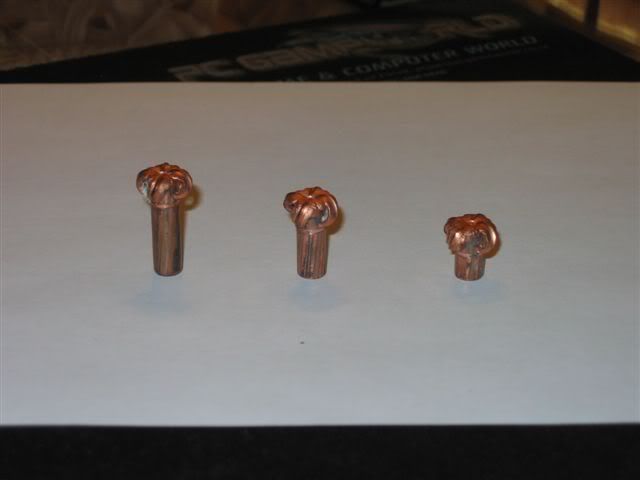 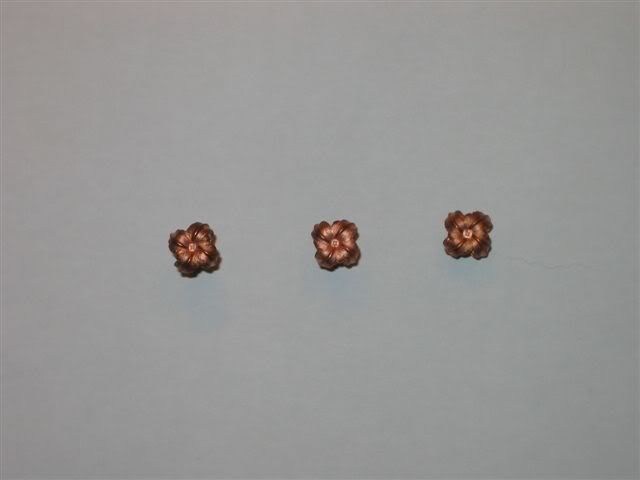 From the top they look like Siamese twins or in this case triplets. Funny that their respective momentum values were in sympathy with penetration depth. Warrior | |||
|
| One of Us |
From this picture we can see what the design features are of the Swift A-Frame bullet - one of which is to arrest expansion when it reaches 2x diameter and that is regardless of what the SD of the bullet is. 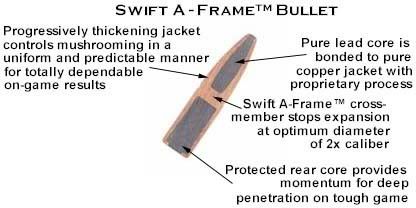 It seems that some of us actually believe that by definition a heavier bullet of the same construction should expand more at the same velocity, despite Swift A-Frames explicit statement. OK, for the non believers, here is the proposition; let's us use a 30-06 Spr with these bullets : a) Shoot a 150 gr bullet at say 2,500 fps b) Shoot a 180 gr bullet at say 2,500 fps b) Shoot a 200 gr bullet at say 2,500 fps By "definition" we should now see progressive increase in diameter expansion, right? And that by virtue of increased SD? Warrior | |||
|
| One of Us |
Hey Warrior, Your samples are at three different speeds you moron. Check out Gerards quote below. I made the important bit in green because it looks like you dont see the words that are printed in red.
It looks like this thread is even further over your head than the sexual destiny thread. | |||
|
| Moderator |
No, it is not. It is the weight to diameter, PERIOD. Shape has NOTHING to do with it, period. Flesh is NOT a solid, and please do stop mixing medical and physics terms AGAIN. Flesh is not a physics solid, it is a physics fluid, and you KNOW it. our example means nothing as that bullet will float on mercury too. Alf, you are a brillant guy, but you aren't making direct sense with your own statements. The QUESTION here is SD, so let's keep to it. The BS formula merely uses the same SD formula for all bullets, and establishes a .275 threshold, taking REASON and empirical proof into account for experience. But, in all seriousness, shoot whatever you like, and so will i... opinions vary band of bubbas and STC hunting Club Words aren't Murder - Political assassination is MURDER Information on Ammoguide about the416AR, 458AR, 470AR, 500AR What is an AR round? Case Drawings 416-458-470AR and 500AR. 476AR, http://www.weaponsmith.com | |||
|
| Moderator |
Alf, "bio-elastic-solids" is a MEDICAL term.. it aint one of the 4 states of matter, and it's not got a THING to do with SD you can continue to spout off lots of things, and I can decide to call you on mixing terms and desciplines. I will continue to, and always will, respect your positions on mausers, and how much you know about mausers, classic rifles, and ammo. Even that you are a medical doctor. What I don't accept is some of your concepts on external ballistics. jeffe opinions vary band of bubbas and STC hunting Club Words aren't Murder - Political assassination is MURDER Information on Ammoguide about the416AR, 458AR, 470AR, 500AR What is an AR round? Case Drawings 416-458-470AR and 500AR. 476AR, http://www.weaponsmith.com | |||
|
| One of Us |
Jeffe! This is the AR Big Bore Forum! We can have 5 states of matter here can't we??!? 1) Gas - the most common state of matter here at AR! 2) Liquid - what some of AR consume too much! 3) Solid - state of cranial matter for some of us. IE - concrete, rock, potato, etc. 4) Plasma - the equivalent state of most of the theories proposed on AR. 5) Elastin - the state of said theories after they are debunked in the plasma phase. | |||
|
| one of us |
The Ballad of Sectional Density Troling Troling Troling Keep the BULLSHIT ROLLING Google till its more Boring SD No ability to understand em Just VELOCITY WEIGHT AND MOMENTUM KEEP UP THE BS TILL THEY CRY MAKE IT UP, CLAIM its science, TELL A LIE,Distort the facts SOON YOU'LL BE FAMOUS BY AND BY! SHALL I CONTINUE? I have not read such a load of nonsense in years. Thanks, it brought a great deal of laughter to an otherwise boring day. -Rob Never underestimate the power of stupid people in large numbers to do incredibly stupid things- AH (1941)- Harry Reid (aka Smeagle) 2012 Nothing Up my sleeves but never without a plan and never ever without a surprise! | |||
|
| One of Us |
Thanks Alf for shining a light on what appears to be a dark matter. I now want to take the statement further with another test that I have done, but first let us look at the caption again:
I used 3 bullets - one weighing 286 grains, the second weighing 300 grains and the third weighing 325 grains. The velocities were lower as the weight went up as can be imagined. What do we find .... the mushroom went bigger as the weight went up, why? It has zip all to do with SD. It has to do with construction, as the answer can be found in the fact that each time the bullet had a deeper hole drilled into it, thus containing more lead. The effect of this being that expansion gets arrested at different depths, and thus the bullet with the deeper hole creates longer petals that peal open. With the 325 gr bullet the velocity was far lower than with the others, so that helped again a bit not to over-expand so much. 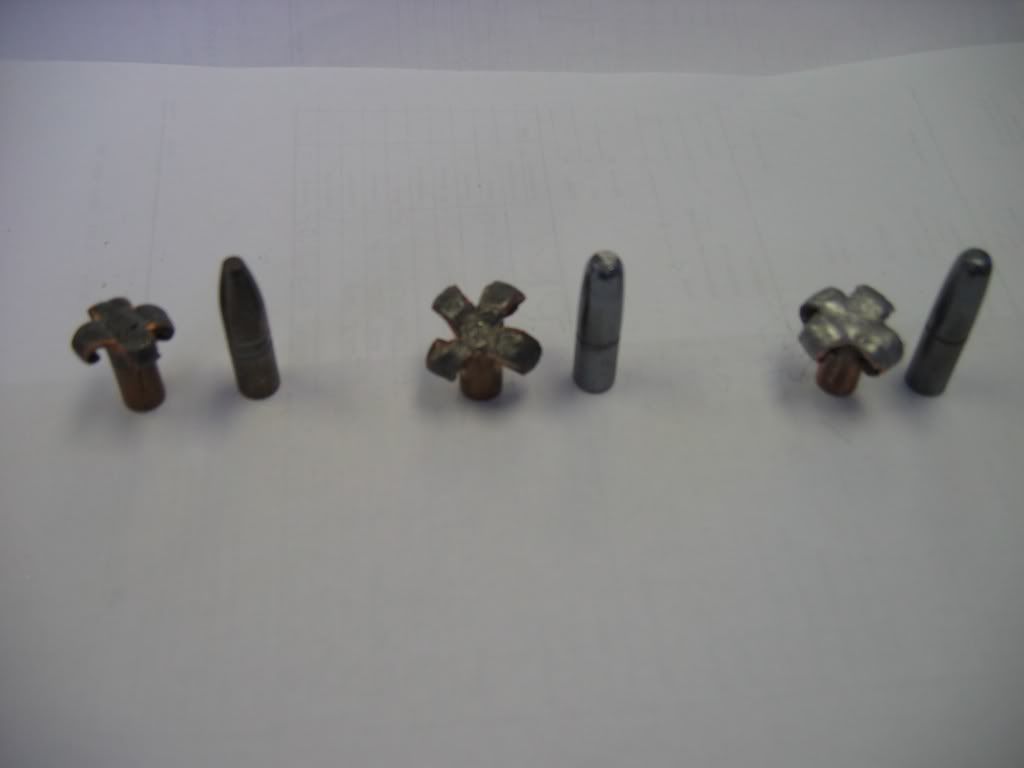 Warrior | |||
|
| one of us |
? | |||
|
| one of us |
Alf, I understand how exasperating Warrior's last post was to you. Do not let it drive you away. He needs more help. As Rob said, the bullshit is rolling along. Consider two expanding/softpoint bullets of same construction except one longer in the shank and heavier therefore, same caliber, nose shape and structural integrity/constuction, and same impact velocity, but differing SD. The heavier bullet will expand more because of the higher momentum and kinetic energy impacting the target medium at same velocity, the higher SD therefore is driving the expansion as McPherson said in the book Bullet Penetration. The heavier bullet continues to expand for a longer period of time in target than the lighter one does. Both will stop expanding when the velocity drops to a certain level: below 1500 fps for a GSC HV. It is not just the impact velocity on the nose, it is the force from behind driving that impact. With the higher SD bullet at the same velocity. It will expand more. Higher SD yields higher impact momentum and greater kinetic energy at the same velocity. However there is more mass to carry on with once expanded, with the heavier bullet, and that will offset some of the greater resistance caused by larger diameter of "wetted nose." As to which soft will penetrate farther ... that depends ... everything is relative to the specifics of the bullet construction and the impact medium ... but there is an absolute: nondeforming FN solids are absolutely different from the softs. | |||
|
| One of Us |
From this picture we can see what the design features are of the Swift A-Frame bullet - one of which is to arrest expansion when it reaches 2x diameter and that is regardless of what the SD of the bullet is.  It seems that some of us actually believe that by definition a heavier bullet of the same construction should expand more at the same velocity, despite Swift A-Frames explicit statement. OK, for the non believers, here is the proposition; let's us use a 30-06 Spr with these bullets : a) Shoot a 150 gr bullet at say 2,500 fps b) Shoot a 180 gr bullet at say 2,500 fps b) Shoot a 200 gr bullet at say 2,500 fps By "definition" we should now see progressive increase in diameter expansion, right? And that by virtue of increased SD? Over-expansion comes when the velocity threshold of a bullet has been exceeded, and so it does not perform then to its intended design criteria. Warrior | |||
|
One of Us |
Warrior You will just have to accept that the rules of SD as they stand refer to lead/copper bullets that mushroom only and cannot be transfered to copper bullets. You are comparing apples with oranges. Your example of Barnes bullets is poor on two counts. 1. The barnes bullets are first generation copper bullets with a solid shank leading to high breach pressures and friction in the barrel so MV is similar to lead copper bullets. Banded monolithic bullets are now the design of choice as velocity can safely and dramatically increase. 2. The Barnes bullets are going far to slow to behave like a modern copper bullet ie they petal so thay follow the same rules as lead copper bullets in your data. What you need to see is that as velocity continues to increase the petals on a copper bullet shead and you create a flat nosed solid which shoulder stabilises in flesh and penetrate deeper as the SD increases again. Here is your data Bullet ----- SD ----- AOL ----------- Powder ------ Velocity ----- Momentum -------- Penetration 175 gr ----.310 --- 77.0 mm --- 38.0 gr S365 --- 2,390 fps --- 59.750 Lb/Ft-sec --- 63.0 cm 142 gr ----.251 --- 75.0 mm --- 40.5 gr S365 --- 2,490 fps --- 50.511 Lb/Ft-sec --- 53.0 cm 108 gr ----.191 --- 73.0 mm --- 43.0 gr S365 --- 2,610 fps --- 40.269 Lb/Ft-sec --- 42.5 cm Now if you load a 0.3 cal 30-06 123gn copper bullet @ 3250 ft/s I get about 67cm of penetration and thats a fact which does not sit well with you example. Copper bullets are designed to travel fast, fragment the tip , shoulder stabilise and penetrate deep. Lead bullets mushroom, shead bits of jacket and the start mushrooming again hence you need a good SD to keep them going. In conclusion optimum SD for a copper bullet is approx 0.25 and lead copper 0.3 and thats it! Hope that clears it up Mark Hunting is getting as close as you can, shooting is getting as far away as possible. | |||
|
| One of Us |
..........I think MarkH is right,,, but bullet CONSTRUCTION is Key.,.,.,.,.,., I appreciate the discusions but sometimes you smart guys explaining bullets is like a theologian trying to explain God .,.The issue gets confusing ... .If it can,t be grown , its gotta be mined .... | |||
|
| Powered by Social Strata | Page 1 2 3 4 5 |
| Please Wait. Your request is being processed... |
|

Visit our on-line store for AR Memorabilia

